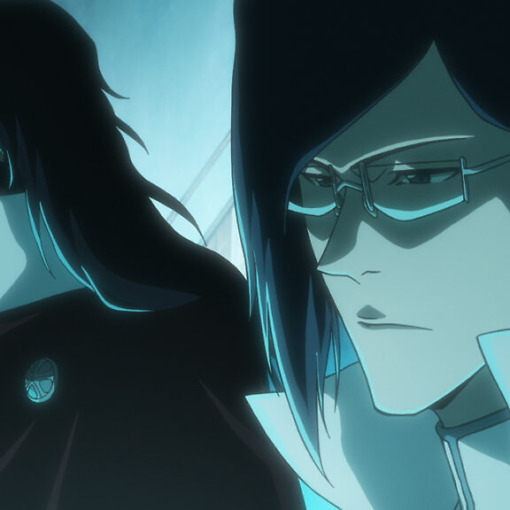By Andrew Osmond.
Many readers of this blog will know what a dating sim is. It’s a computer game where your character develops a romantic relationship with someone else, often one of multiple “possible” characters.
Actually, the definition’s more contentious than that. That above description could apply to many Visual Novels where relationships are important in the branching story, including epics like Fate/stay night and Steins;Gate. But you’ll find people claiming online that dating sims are not Visual Novels. Rather, dating sims should be seen as a different kind of game, often focused on saying the right thing to the right person at the right time, where you’re scored according to how well or badly your relationships are going.
Leaving Visual Novels aside, dating sims are a blurry continuum. Some action RPGs include dating sim elements, including the Persona and Sakura Wars series. But one obvious way to classify dating sims is to separate them into the ones where you’re a guy, and those where you’re a girl. Dating sims where a girl woos guys are called “otome” (maiden) games, and they range from the fantastical Alice in the Country of Hearts to the historical Hakuoki, which were both adapted as anime.
One of the jokes in Trapped in a Dating Sim is that its hapless hero finds himself in an “otome” game and ends up making it a boy-dates-girls game instead. That’s absolutely not what he intended, though; he wanted as little to do with dating sims as possible. At first he’s unnamed (which is how many game characters start out until their players name them). We join him when he’s playing what he thinks is a chronically horrible otome game. He’s only grinding through it because he’s been blackmailed by his younger sister. (What his sister has on him is a mystery, but it must be something really sordid.)
So our hero hate-plays the game’s intrepid girl protagonist, in a posh school full of cute guys who love her, mean girls who hate her, and endless rounds of tea parties. More incongruously, there are monster-filled dungeons, and flying motorbikes, and battles with big robots. The “rationale” is this is a game by a studio that usually caters to male audiences, bunging in what it knows, and bother the worldbuilding. Finally, after days of this drivel – the difficulty level is mercilessly high – the player finishes the stupid game. He gets up, walks outside… and is so exhausted that he tumbles down his apartment steps, apparently lethally.
Of course, he finds himself in the game he hated so much, incoherent worldbuilding and all. You’d expect he’d be one of the main characters, but instead he finds that he’s become a background extra, a generic nobody. In RPG terms, he’s a common or garden “mob”; the anime’s official subtitle is “The World of Otome Games is Tough for Mobs.” It’s only at this point that he’s given a name – he’s Leon Fou Bartfort, son of a minor baronet who wasn’t even in the game.
Which suits Leon fine. He’s delighted to stay in the margins of a story he loathed, like a Tolkien-hater hiding as the sixth nameless hobbit on the left. Fate, though, drags Leon into the plot through amusingly daft contrivances. First, he’s threatened with marriage to a rapacious aristo – this is a matriarchal society. To avoid that, Leon goes on a treasure hunt and ends up finding an ancient A.I. who becomes his secret confidant – we told you the worldbuilding was random. Leon’s plan is to find a low-ranking wife at the school in the game and then live quietly ever after. Only his treasure-hunting success bumps up his status to a Baron, forcing him to court the high-ranking ladies at the heart of the game…
As you may have gathered, this isn’t a power-fantasy; it’s a farce about a supposedly predictable situation spinning out of the main character’s control. Things are out of whack as soon as Leon enters the academy. The “protagonist” girl (Olivia) is around, but she’s not the protagonist anymore; another girl seems to have stolen her script and story. For all his cynicism, Leon can’t help feeling sorry for the desolate Olivia, and also for Angelica, the game’s designated “villainess” who’s outraged at her betrothed prince dallying with a stranger. Before long, Leon’s planned quiet life is forgotten as he’s fighting monsters, duelling in mecha, and relishing being the school pariah, not noticing how much he’s disrupting events. But as he causes characters around him to break character and grow beyond their scripts, will he learn to grow himself?
The show is based on a light novel by Yomu Mishima (like many successful LN series, it also spawned a manga). Given the “reincarnation” device is a staple of Japan’s portal fantasies, it’s no surprise that Trapped in a Dating Sim originated on the Shosetsuka ni Naro website, where tons of these stories began. Some fans have complained the series feels nothing like playing a dating sim, but that surely broadens its audience. Apart from the ludicrous anti-worldbuilding, where you go from a school to a flying island to a gleaming spaceship in moments, the main gag seems to be how a character’s blunders can mess up a predictable romance story – not so different from Shrek. Then there’s the mystery of the strange girl who’s stolen the part of the otome protagonist. In fan terms, she’s trying to Mary Sue a Mary Sue.
Reportedly, “otome game” stories are trending massively in Light Novels and manga at the moment. As of writing, there’s an anime serial of Why Raeliana Ended Up at the Duke’s Mansion, from a South Korean novel and manhwa. It’s not about an otome game, but it’s another story of a character (female) who reincarnates to rewrite a story from the inside, where romance mingles with murder. And then, of course, there’s the anime adaptation I’m in Love with the Villainess, whose reincarnated office lady sets out to turn a “straight” otome story into the yuri romance of her dreams.
Andrew Osmond is the author of 100 Animated Feature Films. Trapped in a Dating Sim is released in the UK by Crunchyroll.



